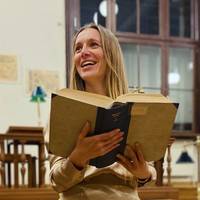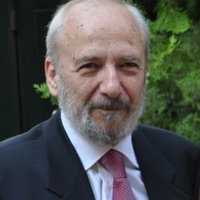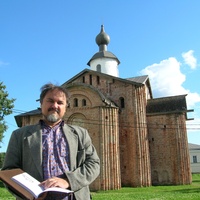Papers by John Chryssavgis
World Policy Journal, 2011

Journal of Early Christian Studies, 2008
also highlighting the continuing presence of God in history through the miracles of the saintly b... more also highlighting the continuing presence of God in history through the miracles of the saintly bishop. As with any collection of conference papers, the whole provides the reader with an overview of the current issues and debates surrounding a particular topic, while also leaving out certain topics. In this case, one discovers the open questions regarding the identity of Gregory and the authorship of the corpus, as well as the contemporary application of rhetorical, literary, historical, and theological/philosophical analyses in order to clarify certain characteristics inherent to the texts. Yet, understandably, some key discussions are left unconsidered, such as a study of the “Metaphrase,” and the less-informed reader may have to resort to other secondary sources in order to fill in the gaps. Overall, however, this collection will stimulate further discussion regarding the figure of Gregory and the writings attributed to him. Two articles (Gasparro, Bais) provide ample bibliographies, making this work particularly useful for professional scholars and advanced students. John Gavin, S.J., Pont. Istituto Biblico
Aram Periodical, Apr 14, 2005
Fordham University Press eBooks, Jun 24, 2020

This book sets out to be a history of Christian worship with a difference. Martin Stringer's fiel... more This book sets out to be a history of Christian worship with a difference. Martin Stringer's field is anthropology and sociology, but, as an undergraduate, he had the opportunity to study liturgy in the theology faculty at Manchester in the days when Kenneth Stevenson and Richard Burton offered a very popular liturgy course at no cost to the university. Stringer is appreciative of the teaching, but notes that the syllabus was heavily text-based-as indeed were most liturgy courses in that era. This study purports to be from a very different perspective, namely, with the recognition that liturgy texts were for worship, and thus performance. After a brief history of the study of liturgy as a discipline, Stringer concludes that today liturgical studies mainly fall into three categories : historical study of rites, such as Stevenson's work on marriage rites ; those of a more social and cultural approach, such as Susan White's study on women in worship ; and those broader studies such as James White's Brief history of Christian worship. Stringer then turns to discuss some postmodern exponents on discourse, such as Foucault and Bourdieu, before setting out his own intention of telling a broader story of worship, with concern beyond the text, looking at performance, devotion and the story of more ordinary members of the congregations. The history is set forth in chapters covering 300 years at a time (though not hard and fast), with kaleidoscopic key themes of discourse, from text and context, to public space, hegemonic worship of empires, cosmological Christianity, devotional discourse, humanistic discourse and globalisation of worship. Like many books of extravagant promise, this book whets the appetite but the author then fails to deliver the goods. To begin with the treatment of the material is extremely uneven, with worship not at all being the main focus of some chapters ; the reader is left wondering whether sacred space, the spread of Christianity or modern mission is the real subject under scrutiny. Second, the work which promises to deliver beyond the text is in fact almost entirely based on secondary sources, some of which are now superseded. There is a certain irony in discussing postmodern writers, only to present a grand narrative based on other grand narratives ; indeed, at times the book reads like a summary of the Grove Liturgical Studies series, with a few liturgical classics thrown in for good measure. Missing are the personal diaries and accounts (other than Egeria) which are absolutely central if the views of the ordinary Christian really are to be reflected. Third, there is too much that is dated and misleading. Few liturgical scholars would attempt single-handed to write a history of

Theological Studies, 2000
often distorted by personal, political, and linguistic controversies. One cannot, therefore, list... more often distorted by personal, political, and linguistic controversies. One cannot, therefore, list, even in outline form, the people, the councils, the coalitions, and the arguments that L. details; but he draws a coherent picture of the controversy that swirled about Marcellus and comes to some surprising conclusions. His analysis shows that the early dyohypostatic opposition, led by Eusebius of Caesarea, tried through individual attacks and conciliar statements to condemn Marcellus as a heretic. Later, Basil of Caesarea, employing his version of the evolving formula “one ousia and three hypostaseis,” also strives to condemn Marcellus. But it is clear that, even though his name became a synonym for Sabellianism to many orthodox writers, Marcellus was nevertheless considered orthodox by numerous contemporaries, including Athanasius, a renowned defender of orthodoxy, Julius, a bishop of Rome, and much of the Western church. In the last chapter, L. discusses four tracts, one by Basil and three others whose authorship is uncertain, that oppose Marcellus in a more benign way than the Eusebians. They steer a middle path between Arius and the extreme opinions attributed to Marcellus, and although they are willing to speak of two hypostaseis or prosopa, they avoid subordinationism by declaring the eternal generation of the Son. The stress on the latter concept enables theology to trump politics and linguistics, for these writings support Marcellus’s concern for monotheism, while making clear their own belief in the reality of the three in one. L. says that, as the history of doctrine in the fourth century is “rewritten and corrected, [Marcellus’s] importance will be more clearly acknowledged” (241). It is clear, he states, that the formula “one ousia and three hypostaseis” clarified church doctrine. “But Marcellus may still say to the Church that the phrase remains in need of careful explanation and that there are other ways, too, of speaking about the mystery of God, One and Three” (244). As sound history this book is a valuable contribution not only for the study of fourth-century church history and doctrine but also for the contemporary stages of an ongoing tradition.
JSRNC, 2008
Page 1. [JSRNC 2.4 (2008) 536-537] JSRNC (print) ISSN 1749-4907 JSRNC (online) ISSN 1749-4915 © E... more Page 1. [JSRNC 2.4 (2008) 536-537] JSRNC (print) ISSN 1749-4907 JSRNC (online) ISSN 1749-4915 © Equinox Publishing Ltd 2008, Unit 6, The Village, 101 Amies Street, London SW11 2JW. _____ Peer Reviewers—Volume 2 _____ Kelly Alley Auburn University Susan Gillespie University of Florida Whitney Bauman Florida Atlantic University Adrian Ivakhiv University of Vermont Jonathan Benthall University College, London Barbara King The College of William and Mary ...
Fordham University Press eBooks, Jun 3, 2013











Uploads
Papers by John Chryssavgis